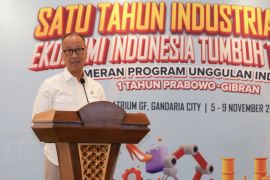The ministry's Deputy for Infrastructure and Transportation Coordination, Rachmat Kaimuddin, noted in a statement here on Friday that based on the World Population Review data, with a GDP per capita of US$5,000, Indonesia's car ownership ratio is still relatively low.
Currently, Indonesia's car ownership ratio stands at 82 units per 1,000 people.
Meanwhile, in Thailand, with a GDP per capita of US$7,000, the car ownership ratio stands at 280 per 1,000 people. As for China, with a GDP per capita of US$13,000, the ratio is 221 units per 1,000 people.
"If Indonesia's GDP rises to US$10,000 (per capita) in 2030, the rate of car ownership can potentially reach 150 or 200 units per 1,000 people," he remarked.
He further highlighted that Indonesia's automotive industry also has the potential to grow big on account of the fact that it is the biggest vehicle producer and market in Southeast Asia.
Related news: Tap automotive sector potential to compete globally: govt to industry
Currently, around 40 percent of the automotives produced by Indonesia had been exported to various ASEAN countries, the Middle East, North America, and South America.
He detailed that Indonesia's vehicle exports to the ASEAN make up 54 percent of the total exports, followed by 18 percent to the Middle East, 15 percent to North America, six percent to South America, four percent to East Asia, and one percent to Africa.
A total of 571 thousand vehicles were exported during the January-December 2023 period, with more than 90 destination countries.
"With the huge potential, Indonesia has the opportunity to become an export hub in this region, especially for the passenger car market," he stated.
Related news: Electric cars are future of Indonesia's automotive industry: Jokowi
Translator: Shofi Ayudiana, Raka Adji
Editor: Yuni Arisandy Sinaga
Copyright © ANTARA 2024












